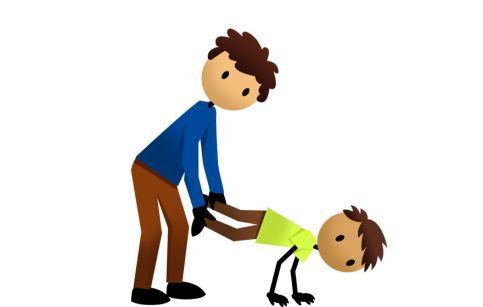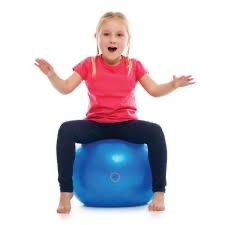What is muscle tone and why is it important for movement?


Definition
Muscle tone refers to the natural stress in the muscle when at rest. It is not the same as muscle strength.
A child with a natural lower tone in his muscle will use his muscles with more effort than a child with normal muscle tone.
Children with low muscle-tone therefore tire easily, or they move about the whole time in an effort to maintain tone and not fall into `resting’.
A muscle with low tone does not register movement as well as a more tensed muscle, and therefore these children may appear clumsy and uncoordinated. They frequently over emphasize movement and/or use exaggerated movement patterns in an attempt to control it better.
How do I recognize a child with low muscle tone?
- These children tend to like to lie around a lot more than most children
- They find it difficult to maintain one position for long, and they tend to lean on other children/furniture
- They slouch in their chairs
- Since their muscles tire more quickly, they also often tend to be restless and fidgety. In fact, lowered muscle tone often contributes to concentration difficulties seen in some children. This is because the job of sitting up and paying attention is made far more difficult if keeping a good upright posture takes effort and does not come naturally. It is not uncommon for these children to be fidgety because continual movements helps build up muscle tone, thereby helping them maintain an upright posture, and improve focus
- These kids tends not to participate in sport or when they do it take more effort than other kids
- These children may be clumsy as the information received from their joints and muscles is not always accurate
- Sometimes, the tone of the muscles in and around the mouth can also be low, and the child may drool or might have subtle speech difficulties on account of the lowered oral tone
Activities to improve low muscle tone
- Push and pull a weighted stroller, laundry basket or box around the house (place phone books, full water bottles, etc. inside to add weight) o Sit on a chair or bench with no back or side support to help reinforce good posture. An exercise ball works great too – just make sure the child’s hips, knees and ankles are in 90 degree angles. The child can also sit on a balance cushion
- When your child is seated at a table, be sure your child has adequate
foot support. Feet should be flat on the floor. If the chair is too high,
use a Tupperware/plastic bowl turned upside-down so that feet rest properly - Have the child sit in a box or laundry basket and give them a ride. Start by moving slowly to make sure you child can use his trunk muscles to maintain balance. Then, move it quickly, starting and stopping, sliding and rocking, side to side and front to back. When his trunk muscles is strong enough you can pull the child on a blanket
- Reaching activities to improve the ability to stand on toes and raise arms above the head. Use magnets placed up high on the refrigerator or reaching up to see what is on a high counter or table. Hold books up high and have your child point to pictures or take something out of your hands held above their head level
- Jumping games: help your child by holding under their arms and jump on the floor several times in a row. As their ability improves, support them by holding their hands and start to jump down from a step. A mini trampoline is also great to support early jumping
- Bouncing up and down on a large exercise ball while sitting – move them up and down in all directions (front to back and side to side) to engage various postural or “core” muscles
- Wheelbarrow walking: have your child place their hands on the floor, then lift them at their hips so they “walk” on their hands. If they are unable to hold themselves up on their arms, provide some support under the chest. If they are easily able to wheelbarrow walk with support at the hips…try
holding them at their knees…..and later at their ankles. Aim to increase the distance they are able to wheelbarrow walk

- Climbing onto appropriate furniture or ladders and jungle gyms at the playground
- Tape paper up on the wall above eye level and provide crayons. The goal is for the child to color with arm and hand above shoulder height
- Squat to pick up heavy items, lift and carry. Children can help unpack groceries and place it on a counter-top or a shelf or use a watering can to water plants. Lift heavy object above shoulder height
- One foot balance activities: lift one foot to step on bubbles blown low on the floor, kick a ball, step on and off as small step or step over a small obstacle
- Encourage running and chasing games
- Obstacle course – encourage climbing over a mountain of cushions or pillows, crawling under tables and through tunnels or boxes, as well as stepping on or over objects
- Animal walks: Bear walk (on hands and feet with bottom in the air), duck walking in a squatting position, jump like a frog and to hop like a rabbit
- Fun sit-ups: have you child lie on the floor on his back with bent knees and position yourself at his feet. Have them sit up trying not to use their hands. Make it interesting by asking them to high 5 you every time


